Two of our previous blogs discussed Hitler’s enablers (refer to blogs, Hitler’s Enablers – Part One and Hitler’s Enablers – Part Two [click here to read part one and here to read part two]). Without hundreds of thousands (millions?) of people to carry out his orders, policies, and directives, Hitler would likely never have attained the status of the greatest mass murderer in the history of mankind. For a myriad of reasons, the majority of the Führer’s enablers went unpunished or if convicted, never fully served their sentences (click here to read the blog The Wisemen). For one group of enablers (i.e., war criminals), their post-war stories centered around the “ratlines” (click here to read the blog ODESSA: Myth or Truth?) that guided them out of Europe and in many cases, to South America (in particular, Brazil, Argentina, and Chile). For some (e.g., Josef Mengele, Aloïs Brunner, and Walter Rauff), they managed to either elude capture or were protected by a dictator and ultimately died in their “adopted” country. Others such as Franz Stangl, Josef Schwammberger, and Erich Priebke were eventually extradited to West Germany where they were convicted and died in prison.
Today’s blog is about Adolf Eichmann, one of the most notorious Nazis responsible for the organization and execution of the Final Solution. (Contrary to certain article headlines, Eichmann was not the “architect” of the Final Solution⏤he carried out the orders.) Eichmann’s capture in Argentina by the Mossad in 1960 and subsequent trial in Israel in 1961 were significant events on the world stage. Not widely known for his role in the Holocaust, Eichmann’s trial re-opened the file on Nazi atrocities and provoked a world-wide discussion about the Holocaust and Nazi genocide⏤topics that had been suppressed for fifteen years.
Did You Know?
Did you know the United States recently announced it has evidence that Russian President Vladimir Putin is using various tactics to undermine Ukraine’s democracy? One of these tactics is the development of a video depicting a fabricated attack on Russian troops by the Ukrainian army. Reportedly, the video will show graphic scenes of corpses after an attack by Ukraine with images of physical property destruction. U.S. intelligence believes Putin intends to use this as justification to invade Ukraine.
Do you recall Hitler staging a fake attack on German soldiers by the Polish military? German troops were massed on the border of Poland in August 1939 waiting for the order from the Führer to invade Poland. Hitler’s tactic was to dress up male inmates from a local concentration camp as German soldiers and place them near a German radio station near the Polish border. Schutzstaffel (SS) troops masqueraded as Polish soldiers to attack and gun down the “German soldiers.” Hitler used this fake attack to justify the invasion of Poland on 1 September 1939 and begin World War II.
Are the recent U.S. intelligence reports true about Putin and his tactics concerning Ukraine? I don’t know. However, one thing I do believe is that history repeats itself.
Adolf Eichmann
Otto Adolf Eichmann (1906−1962) was born into a lower middle-class family. He did so poorly in secondary school that his father withdrew his son and enrolled him in a vocational school. Eichmann never obtained his degree and by 1927, he was working in Salzburg for an oil company. Right about then, Eichmann became enamored with Hitler and the Nazi party’s political platform. In April 1932, on the advice of his childhood friend, future SS-Obergruppenführer and director of Reich Security Main Office, Ernst Kaltenbrunner (1903−1946), Eichmann joined the Schutzstaffel (SS) as member #45,326.
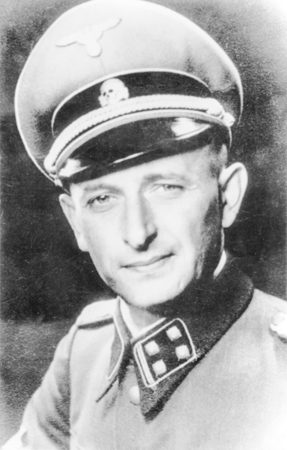
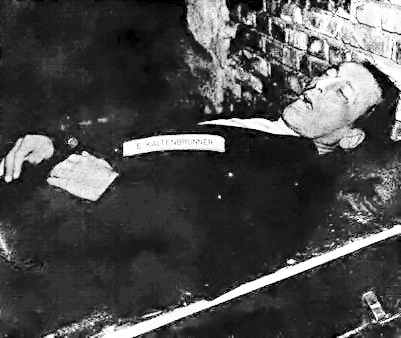
Two years after joining the SS, Eichmann was transferred to the Sicherheitsdienst (SD), the Nazi party political intelligence group. There, he was invited to join the SD’s Jewish Department where he studied and reported on the Zionist movement and various Jewish organizations. Over time, Eichmann successfully passed himself off as an “expert” on Jewish matters. (In 1935, Eichmann began working on the “Jewish question.”) In 1937, Eichmann traveled to Palestine to assess the viability of Jews emigrating from Germany. This idea was ultimately dismissed by the Germans. (His report on that visit was not made public until 1982.) After the Anschluss in 1938 (i.e., German annexation of Austria), the SD and Eichmann were assigned to supervise (i.e., “encourage and facilitate”) Jewish emigration. He left Austria in May 1939 for Prague and ultimately moved to Berlin in October. Shortly after the invasion of Poland in September, Nazi policies toward the Jews changed from emigration to deportation. SS-Obergruppenführer Reinhardt Heydrich (1904−1942) began to implement and facilitate the deportations of Polish Jews and Eichmann became his “special expert” responsible for all aspects of the deportations. During 1940 and 1941, Jewish ghettos were established primarily in eastern European cities while deportations were beginning to take place in the occupied countries. However, Heydrich received orders in July 1941 to develop a plan for a “total solution of the Jewish question.” It was Heydrich who can claim the title of “Architect” of the Final Solution and this led to the Wannsee Conference where final plans were presented to a select group of Nazis for implementation.
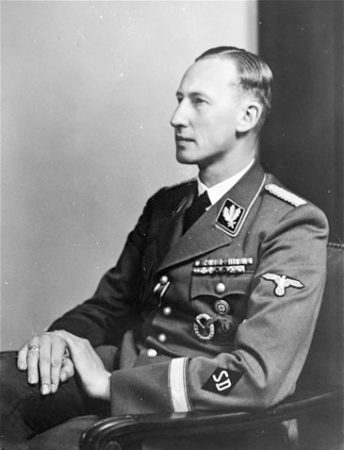
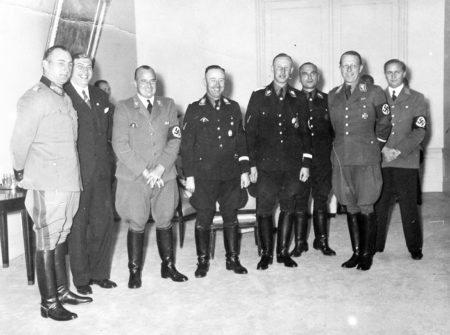
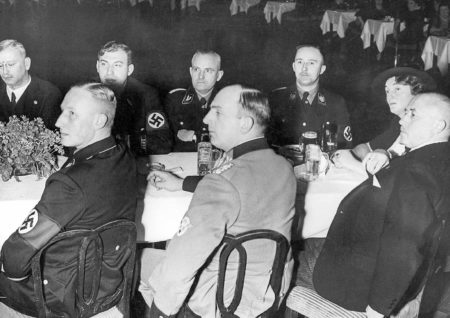
Wannsee Conference
Toward the end of 1941, the war was not going well for the Germans. In December, the Soviets were beginning to hold their own against the German invasion and a second front was created when Germany and the United States declared war on one another. Hitler turned from a political solution (i.e., emigration of Jews) to a policy based on the liquidation of European Jews in Germany, Italy, and the occupied countries. (Einsatzgruppen, or mobile execution squads were already following German troops into the Soviet Union and eastern European countries murdering Jews, partisans, and Soviet commissars.) By now, SS-Obersturmbannführer Eichmann was Heydrich’s right-hand man for Jewish affairs.
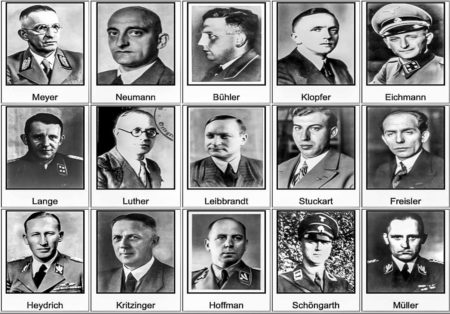
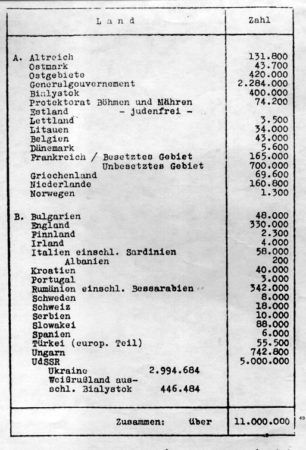
On 20 January 1942, in addition to himself and Eichmann, Heydrich invited thirteen senior Nazi party officials and government leaders to a meeting in a villa in the Berlin suburb of Wannsee. Eichmann was designated as secretary for the meeting and a copy of his notes has survived. At the meeting, Heydrich presented the plan to murder eleven million Jews living in German-controlled territories. For ninety-minutes, the men discussed the coordination and cooperation of German agencies for the implementation of what has become known as the “Final Solution of the Jewish Question.” The responsibility for executing the Final Solution, beginning with arrests and deportations, was assigned to Eichmann and his minions. In the end, six million Jews were systematically murdered; four million in the camps and two million by Einsatzgruppen (primarily in Poland) and Nazi allies (e.g., Croatia, Hungary, and Romania).
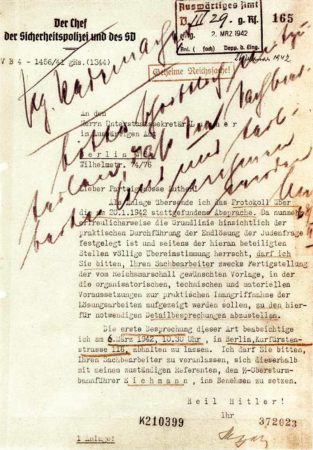
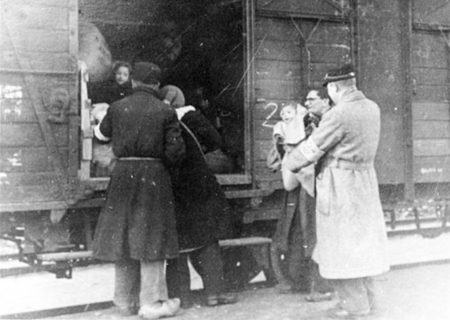
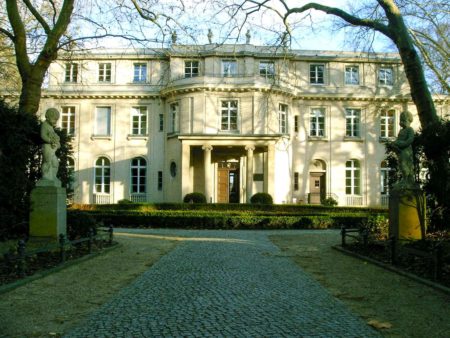
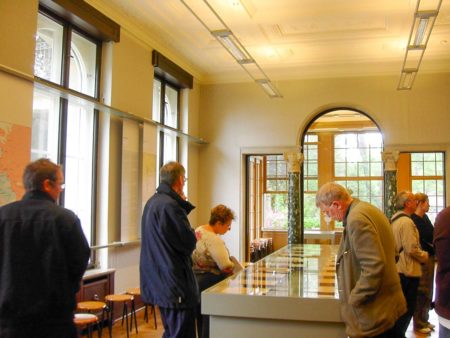
The Argentina Papers
The Argentina Papers is a collective term used for a series of written notes and memoirs by Eichmann while in exile during the 1950s. Additionally, there are the transcripts and taped interviews conducted with Eichmann by Willem Sassen known as the “Sassen” interviews. Combined, these sources totaled more than thirteen hundred pages and are scattered between three separate archive collections. Additionally, Eichmann produced a stand-alone manuscript entitled, Die anderen sprachen, jetzt will ich sprechen! or “The Others Spoke, Now I Want to Speak!” Another manuscript written by Eichmann about his life and an explanation of his wartime experiences is in the custody of the Eichmann family and has not been released to the public. Also included in this body of work are the transcripts of his interrogations in Jerusalem and his writings during captivity.
Eichmann’s role in the Argentina Papers and specifically, the “Sassen” interviews, was meant to be part of a larger testimonial project encompassing many former Nazis living in Argentina. Their intent, according to Bettina Stangneth, was to bring back National Socialism. During their exile, Eichmann and the other former Nazis were rather open about their existence in Argentina. They published newspapers and magazines and Eichmann took great pleasure trying to impress people with his role during the twelve years of the Third Reich. It is hard to imagine that the intelligence organizations of West Germany and the United States did not know the whereabouts or monitor the activities of these men including Eichmann. (But then, that’s a discussion for another day.)
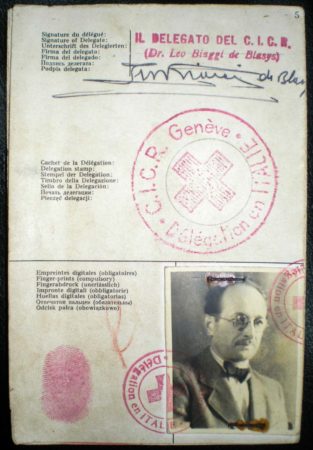
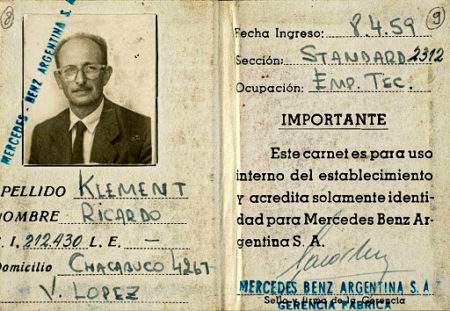
Eichmann’s comments give the professional historian and others a window into his post-war relationships. (Many people who previously denied knowing him, were identified as being friends and sympathizers.) However, Ms. Stangneth rightfully points out in her book, Eichmann Before Jerusalem, that the reader of the Argentina Papers should not expect revelations of new historical insights. Eichmann’s motivation for his prodigious writing and interviews was to reshape history, namely steering it to benefit and justify his legacy.
Sassen Interviews
Willem Sassen (1918−2002) was a Dutch collaborator, Nazi journalist, and a member of the Waffen-SS (the military arm of the SS). After the war ended, Sassen went into hiding in Belgium and the Netherlands before leaving for Argentina in May 1947 along with former SS men and other collabos. About ten years later and by sheer coincidence, Sassen met Eichmann (aka Ricardo Klement) in a bar in Buenos Aires and they developed a friendship. Sassen’s new friend offered him a “hot story” about the Hitler regime. This began a series of interviews, but it wasn’t until later that Klement revealed his true identity to Sassen. Eichmann intended the interviews to explain his actions and, in the end, exonerate him of crimes. The interviews ended in May 1960 when Eichmann was captured near his house by Mossad operatives. Eichmann and Sassen intended to take the transcripts and turn them into a book. However, that never occurred and in 1980, the Sassen documents and tapes were turned over to Eichmann’s widow. Twenty years earlier, Sassen sold a portion of the interviews to Life Magazine which published two haunting articles in November and December 1960.
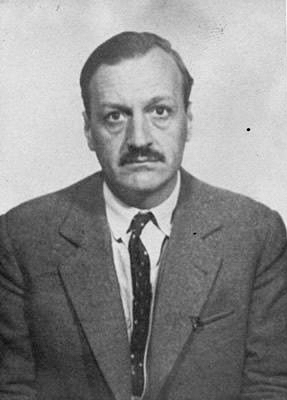
Eichmann denied being a mass-murderer and repudiated the label “Czar of the Jews” that was used to describe him by a Paris newspaper. He describes how his superiors assigned him to start work on the “solution of the Jewish problem.” Incredibly, Eichmann said that if he had been Jewish, he would have been a fanatical Zionist. His explanation for requiring Jews to wear the yellow Star of David was not to place pressure on them, rather it was to keep Germans from coming to the aid of a Jew during periods of harassment. He said, “We wanted Germans to feel embarrassed, to feel afraid of having any contact with Jews.”
Eichmann even goes so far as to say, “. . . each of us, as an individual, had no wish to harm the individual Jew personally.” After Hitler changed from a political solution to one of liquidation, Eichmann states that Heydrich assured him that he or his men would not be involved in the physical liquidation⏤“We would act only as policemen; that is, we would round up the Jews for others.” He claims innocence because he never ordered a single annihilation, only being responsible for deportations. Eichmann admits that his only interest was to ensure there enough trains, quotas were met, and the trains ran on schedule. As he said, “. . . the people who were loaded on these trains meant nothing to me. It was really none of my business.”
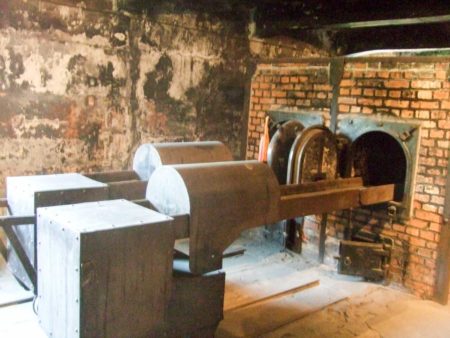
Eichmann claims he never had anything to do with the gas chambers. Although he visited KZ Auschwitz II-Birkeneau numerous times and was good friends with the commandant, Rudolf Höss (1901−1947), Eichmann claimed ignorance as to the process used to murder 1.1 million Jews at Auschwitz. He even went to lengths to describe how they tried to provide for the comfort of the deportees (e.g., closed cattle cars rather than open, fresh water, and cleaning the slop buckets). Yet, Eichmann was proud of the efficiencies he demanded⏤“As the transport trains rolled into Auschwitz, sometimes bringing as many as 10,000 units a day, the camp staff had to work day and night.”
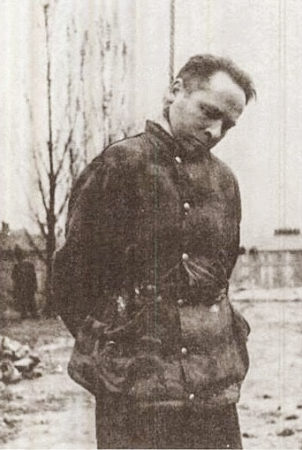
In the end, Eichmann says, “I am no anti-Semite. I was just politically opposed to the Jews because they were stealing the breath of life from us.” His defense (like many others) was that he only followed orders.
The Trial
During Eichmann’s trial in 1960, the Jerusalem court decided not to accept much of the “Sassen Interview” as evidence because they couldn’t prove its authenticity. However, the court did accept about seventy pages in Eichmann’s handwriting (out of a total of seven hundred pages from Sassen’s interviews). Ms. Stangneth points out that at the time, prosecutors, judges, and journalists did not realize this was a mere snapshot of a “much bigger manuscript.” In other words, it was a fragment of the story.
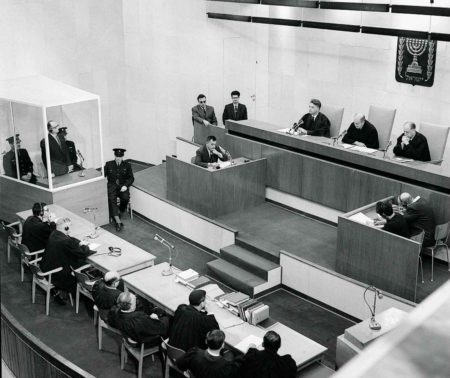
The Banality of Evil
Hannah Arendt (1906−1975) was a political philosopher, intellectual, and author who attended Eichmann’s trial. Her conclusion was that Eichmann was a mediocre bureaucrat who could not think independently and whose crimes against humanity were due to and fulfilled by a larger system. Ms. Arendt’s view of Eichmann, according to Ms. Stangneth, was tainted by Eichmann’s “expert manipulation” resulting in Ms. Arendt becoming convinced that except for a personal desire for advancement, Eichmann had no motives for what he did. To be fair, it wasn’t only Ms. Arendt who was deceived by Eichmann’s lies. (Plus, she did not have access to documents that were available to Ms. Stangneth.) Please watch this video (click here) for an excellent analysis and rebuttal to Ms. Arendt’s conclusion that Eichmann represented the banality of evil.
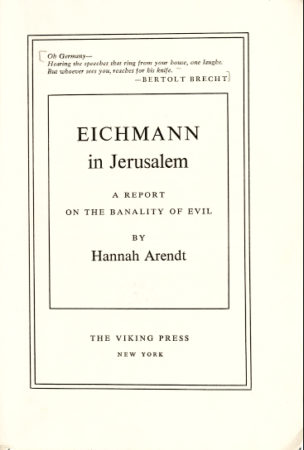
Ms. Arendt and others at the trial expected to witness some sort of monster in the glass booth but the man they saw was rather ordinary. This shocked them. I suppose it’s like when Dorothy’s dog pulls the curtain open, and the “great and powerful OZ” is revealed to be a meek and mild man pulling the levers.
So, is evil perpetrated by individuals or the institutions they represent⏤or both? I believe it is the individual. The men who wrote the American Constitution, the Bill of Rights, and other underlying documents supporting the formation of the United States knew this. That is why they created the checks and balances within their framework for the fledgling American political system. Authoritarian and totalitarian political systems do not have the necessary checks and balances and that is one of many reasons why they are so dangerous.
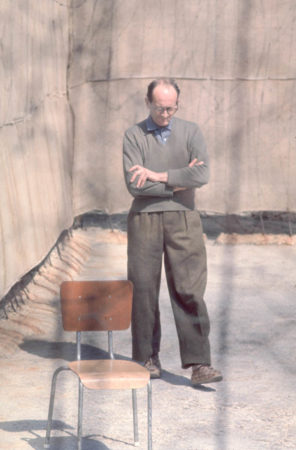
★ Learn More About Adolf Eichmann ★
Arendt, Hannah. Eichmann in Jerusalem: A Report on the Banality of Evil. New York: Penguin Classics, 2006. Original publication⏤New York: The Viking Press, 1963.
“Eichmann Tells His Own Damning Story (Eichmann’s Story Part I)” Life Magazine: Vol. 49, No. 22, 28 November 1960.
“Eichmann Tells His Own Damning Story (Eichmann’s Story Part II)” Life Magazine: Vol. 49, No. 23, 5 December 1960.
Klarsfeld, Beate & Serge. Translated by Sam Taylor. Hunting the Truth: Memoirs of Beate and Serge Klarsfeld. New York: Farrar, Straus and Giroux, 2015.
Nagorski, Andrew. The Nazi Hunters. New York: Simon & Schuster, 2016.
Stangneth, Bettina. Translated by Ruth Martin. Eichmann Before Jerusalem: The Unexamined Life of a Mass Murderer. New York: Alfred A. Knopf, 2014 (translated copy). Original publication by Arche Literatur Verlag AG (Zurich-Hamburg) in 2011 as Eichmann vor Jerusalem: Das unbehelligte Leben eines Massenmörders.
Walters, Guy. Hunting Evil: The Nazi War Criminals Who Escaped & the Quest to Bring Them to Justice. New York: Broadway Books, 2009.
Ms. Stangneth believes there are more than eight hundred books written specifically about Eichmann and his role in the extermination of eleven million people (six million of whom were Jewish) during the Holocaust. Then there are hundreds of books written about the Holocaust that encompass Eichmann’s involvement, subsequent escape to South America, and eventual arrest and trial. The books (and magazines) I’ve listed above are from my library.
This really has nothing to do with the topic of today’s blog, but I thought I would share a short review of a new book I’ve recently read. The book, The Nine, was written by Gwen Strauss. It’s about nine young female résistants arrested by the Germans and deported to Germany. They became close friends and escaped together from a death march in April 1945. That’s about all I will disclose of the story. The leader of the nine women, Hélène Podliasky (nom de guerre: Christine) was Ms. Strauss’s great aunt. All nine have passed away and the author has done a wonderful job piecing together a story that each woman either withheld or only covered bits and pieces of their entire journey. The first comment by Hélène at the interview with Ms. Strauss was, “What’s the point?”
It is yet another story that was lost in the fog bank of history and only recently unearthed due to the diligence of the author. The story confirms the bravery, tenacity, and resolve of resistance fighters and in particular, women resistance fighters.
The book is billed as non-fiction, but I believe it falls more into the historical fiction category because of the dialogue that I really don’t believe Ms. Strauss could authenticate. However, it is much closer to being non-fiction than I could say about The Nightingale (also considered historical fiction). There are some historical inaccuracies that should be addressed with the second edition but all-in-all, I highly recommend reading The Nine. It is another example of why we must never forget.
Disclaimer:
There may be a chance that after we publish this particular blog, the video links associated with the blog are no longer accessible. We have no control over this. Many times, whoever posts the video has done so without the consent of the video’s owner. In some cases, it is likely that the content is deemed unsuitable by YouTube. We apologize if you have tried to access the link and you don’t get the expected results. Same goes for internet links.
What’s New With Sandy and Stew?
Well, we finally made it! Our new book, Where Did They Put the Gestapo Headquarters? A Walking Tour of Nazi-Occupied Paris, has been published and is now available for sale ($24.95). I think it’s the best of the five books on Paris I’ve written. But I will let you be the judge of that. I think we’ve sold more books in the past several weeks than we did all last year.
If you would like to get an autographed copy, please contact Sandy (sandy.ross@yooperpublications.com) and remember, we’ll pay the postage for subscribers for any sale within the United States.
Thank you to all of you who subscribe to our bi-weekly blogs. It seems there isn’t a day that goes by where we don’t increase our readership. Please let your history buff friends and family members know about our blog site and blogs.
Someone is Commenting On Our Blogs
I’d like to thank Pete C. for contacting us regarding our blog, Rendezvous with the Gestapo (click here to read). Pete saw the B-17 in one of the images and told me his friend, Charlie Smith, was the pilot. His plane was the “Lady Liberty,” and she was shot down. After doing some research, we found that Charlie’s plane was a different B-17 (same name but different tail number) than the one in the image. Fortunately, Charlie survived the crash in the Netherlands, but most of his crew did not. Thanks, Pete, for sharing that with me. I always like going down a rabbit hole.
Another reader, John W. M., contacted me about one of our blogs. John is doing research for his second novel and told us that our blog had given him “several tidbits and leads” to add authenticity to the novel. Thanks, John, for your kind words concerning both the blog and our web site. John was nice enough to allow me to read the rough draft of his novel (projected publication is August). It is a story based on a screenplay he wrote. Frankly, once I started reading, I couldn’t put the book down. His attention to detail is amazing! It reminded me of reading The Nightingale. John has agreed to write a guest blog but not until we get closer to publishing his new book which by the way, should make a great movie. It has sex, car chase (albeit a ship being chased by a German U-boat), and then the big explosion at the end⏤can’t miss.
If there is a topic you’d like to see a blog written about, please don’t hesitate to contact me. I love hearing from you so keep those comments coming.
Why Would You Want to Buy Our Walking Through History Books?
Simple.
You like to travel and experience history and historical events. You like to see original buildings that had a significant impact on the people and events of the history you’re engaged with. You want to know the stories behind the brick and mortar in front of you.
The walking tour books are meticulously researched so you can go directly to those sites and learn about the building’s history as well as an introduction to some of the more interesting people associated with it.
We Need Your Help
Please tell your friends about our blog site and encourage them to visit and subscribe. Sandy and I are trying to increase our audience and we need your help through your friends and social media followers.
Thank You
Sandy and I appreciate you visiting with us. We have some exciting things on the horizon, and we’ll keep you updated as we go along.
Share This:
Follow Stew:
Find Stew’s books on Amazon and iBooks.
Please note that we do not and will not take compensation from individuals or companies mentioned or promoted in the blogs.
 Walks Through History
Walks Through History
Copyright © 2022 Stew Ross


Hi Stew:
Love your blogs. But when you say: “Without hundreds of thousands (millions?) of people to carry out his orders, policies, and directives, Hitler would likely never have attained the status of the greatest mass murderer in the history of mankind.”
. . . .you don’t give “credit” to the two bigger mass murderers in the history of mankind: Joesef Stalin and Mao Tse Tung.
https://newsrescue.com/top-ten-evil-dictators-time-in-order-kill-count-gowon-leopold-hitler/
Thanks Carl for those kind words about the blogs. You’re correct, I didn’t mention Stalin or Mao. I wanted to keep the focus on Hitler. Historians seem to be all over the board with respect to how many people were killed under the Soviet and Communist Chinese regimes. So, it’s tough to pin down the correct number fatalities to attribute to each of these dictators. However, there really is no doubt that Mao was likely the greatest mass murderer in history. STEW